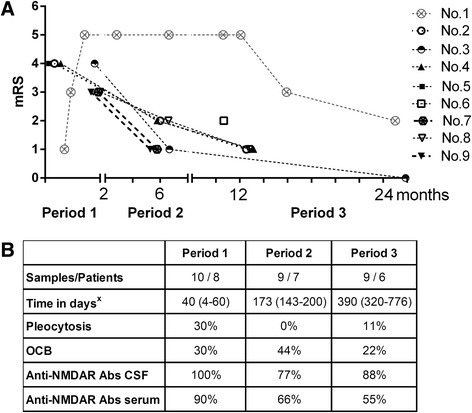Fig. 1.

Stratification of CSF samples and the laboratory data. a For 7/9 patients with anti-NMDAR encephalitis, two or more CSF and serum samples were collected at different time-points. In total, we collected 27 paired CSF and serum samples from the patients during the 26-month observation period. The clinical status (as defined by the mRS) was assigned to every sample, and the successive samples from the same patient are marked. All of the patients except for no. 8 and no. 9 were treatment naïve in period 1. Patients nos. 1, 8 and 9 did not respond sufficiently to the first-line immunotherapy, and the second-line treatment was planned. All of the patients in period 2 were already treated. Patient no. 6 was diagnosed late; she was the only treatment naïve patient in period 3. b The samples from the patients were stratified into three periods (periods 1–3) after the appearance of the first disease symptom x(days; median and range). The following common laboratory data are summarized in the table (percentage among all of the samples in the given period): pleocytosis in CSF (as defined by leukocytes > 5/μL); oligoclonal bands (OCB) in CSF; and anti-NMDAR antibody (Abs) positivity in CSF and serum (defined qualitatively)
